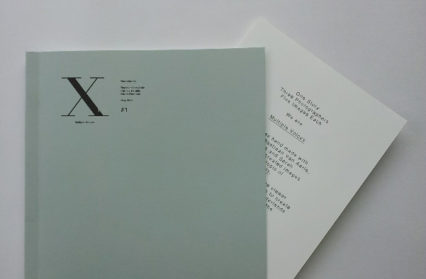Multiple Voices: Mission to Seafarers, Cardiff
Published by Kristian Saunders and Alexander Norton, with contributing guest artists Sarah Hermans, Baastian Van Aarle and Patricia Karallis.
It’s not uncommon to find an old Seamens’ Mission Chapel now enjoying a second wind as an exhibition space. The compact Mission Gallery in Swansea is one such place ideal for the contemplation of a single artist show. On a dark night, at the docks end of Cardiff Bay, I am in search of the Mission To Seafarers on Tyneside Road, and am drawn towards a little stand-alone shack by the glow of a weak yellow porch light, guiding me home like a dim lighthouse that’s as out of sorts as the Mission.
Adjusting my mindset from the now completed drive, I draw a deep, slow and reverential breath to assume the (mental) position as I lever the door handle – and you could have knocked me down with that proverbial feather for what lay within! I enter not a quasi-religious place for the dead and the still – but a bar. A living and still beerily breathing public house plus pool table, a high-perched TV with sound and several pub conversations in full swing.
Multiple Voices is an exhibition to launch a tri-monthly publication of the same name, devoted to the photographer’s art and as equally, to the hand made book. Images on this début theme of Borderlands have been displayed over just two walls in this unexpected space that could almost be translated as a supportive instillation in its own right. How much notice the regulars make of this art added to their pints is anyone’s guess but the juxtaposition is a warmly envisioned one.
A set of cold misty day beach scenes catch the eye, alien as they are to the generic holiday brochure message. Two distinct characters are at odds with the grey smothering sea joined to an indistinguishable sky. No dreamy horizons for them, but an uneasy frigidity that compels and holds the figures. In another photo, again a featureless landscape but at its centre a defunct sign for holiday makers with its message obliterated by a swoosh of white emulsion. Curiously, an echo of a generic palm tree icon can still vaguely be seen through the paint. What was it promising? What was the dream?
Taking pride of place on the far wall is a central photographic portrait, faded, circa 1977 of a seated Her Majesty with Prince Philip standing to her shoulder. Both parties look at ease in their less crushing Silver Jubilee world. There’s a surety of place. Having presumably gazed over her dockland subjects from this exact space for thirty-six years, Multiple Voices respectfully circumvents the cheap gilded frame with their array of disjointed visual essays on place.
Two further images catch the eye and for me, are the most engaging. In an fir plantation, a pair of sculpturally articulated rusting joy-ride wrecks are imbued with the grace of rich plumaged, fallen raptors. The spray-paint bodywork is jewel-like. Through an emotional connection with the deaths of perhaps rare and exquisite birds, tragedy by association has been super-imposed. It is thrilling to realise feelings for inanimate objects and just as off-kiltering.
With a gently romantic view of throwing art to the salty dogs, the notion of counter-expectation has an extra gift to give. Adding one more playful angle to the discourse, I couldn’t help but overhear conversation snippets from a table of female drinkers as I viewed the works. These ladies were evidently professional actors and quite likely employed within new BBC studios that are just a stones throw from this, their temporary Local. It spreads a smile to remember that each of us can only ever start the conversation.
Lacking author or provenance captions, dates or brief biographies of the artists, nor any technical information about either capture or manipulation here, or in Edition #1, the works of Multiple Voices alone and their arrangement are the conversation starters but I’m not fully convinced that the photographs alone can handle the responsibility. All the images in the book are also on the walls in front of me, (augmented by extra sets from the two publishers), the subjects share a detachment from a common society and express their own versions of alienation, I came away feeling that the most satisfying communion as a direct result of the pub/gallery/display/you-name-it itself with the photographic exhibition being subsumed into the life story of this dear old bar. But maybe this is the conversation Kristian Saunders and Alexander Norton had in mind all the time.
You might also like…
Richard Glynn Vivian (1835-1910) was born in Swansea and travelled the world, collecting art from every country he visited. He left his entire collection for the enjoyment of the people of Swansea, and after he died, The Glynn Vivian Art Gallery was built to house his collection.
Jane Oriel is a regular contributor to Wales Arts Review.













